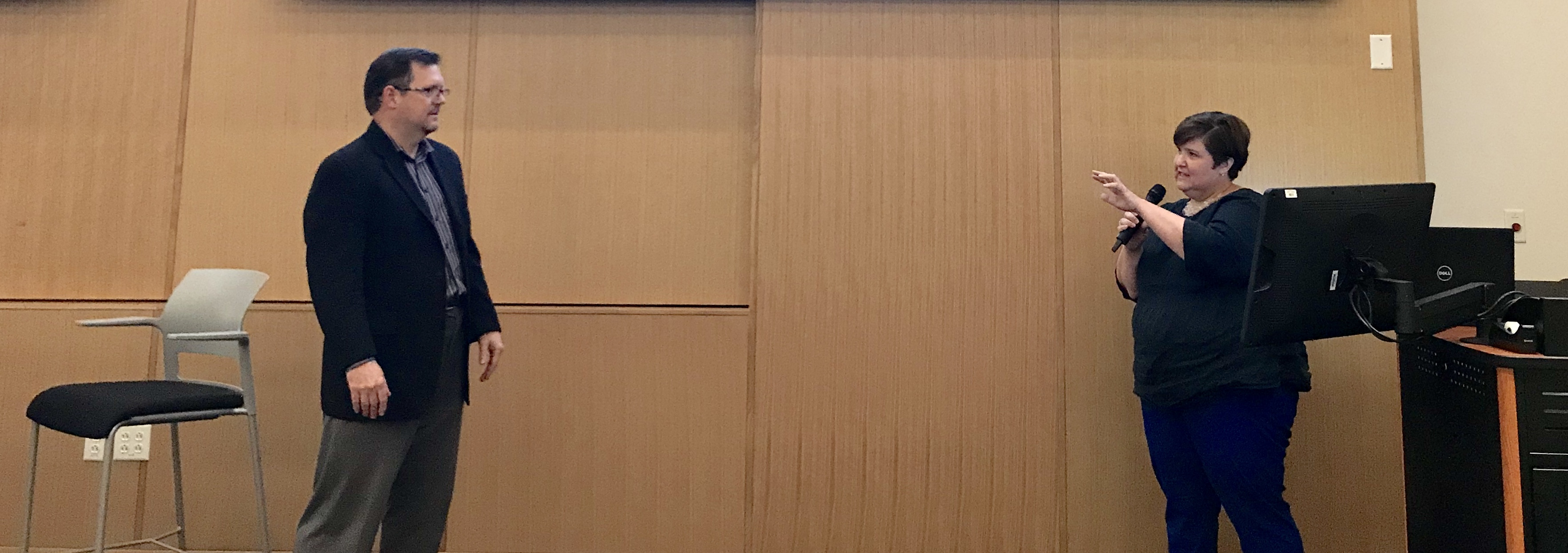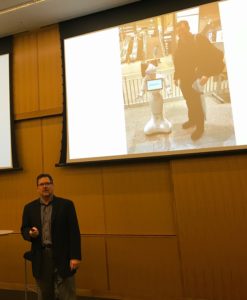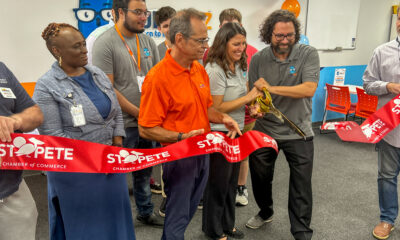Innovate
How robots, artificial intelligence and autonomous vehicles will change healthcare

Technology that can replace, or at least supplement, human labor will dramatically reshape healthcare in the future.
That was the message Keith Brophy, director of the Business Lab for Blue Cross Blue Shield of Michigan Emerging Markets, brought to St. Petersburg Wednesday morning.
“We do live in this world of new possibilities. The future ahead is one of health care disruption,” Brophy said at the Sunny Side Up speaker series, presented by the Kate Tiedemann College of Business at USF St. Petersburg and the St. Petersburg Downtown Partnership.
An increasing number of baby boomers who are turning 65 will propel disruption in the healthcare industry. Over the next 15 years, the number of people in the United States who are 65 and over will quadruple.
“We’re all living longer. The age expectancy is going up, up, up due to medical technology … and expectations of what life will be when you are 60, 70, 80 and 90 have continued to shift as we see so many examples of engaged life in the senior years,” Brophy said.
Based on his work at the Business Lab, which focuses on introducing innovative approaches to healthcare, and his own life experiences, Brophy cited several tech trends that he expects will make an impact on healthcare.

Keith Brophy showed a slide of his encounter with Pepper the robot in Japan.
Robots. Brophy talked about his encounter with Pepper, a robot developed by Japanese tech giant SoftBank, which can detect human emotions. While at a train station in Japan, the robot not only figured out that Brophy spoke English, not Japanese, but also determined that Brophy was confused and the robot was able to provide directions.
The Japanese culture is very friendly to robots, which are being used in some healthcare settings. “In Japan, up to 30 percent of nursing home residents have some type of interaction with a robot,” Brophy said.
Autonomous vehicles and ride-sharing. There are economic and health benefits from autonomous vehicles, Brophy said. He cited the 1.2 million auto deaths each year, almost all caused by human error. He also said that he was a passenger in a Lyft vehicle in San Francisco driven by a human that ran off the highway and overturned — likely because the driver was sleepy — and he now chooses autonomous vehicles whenever he can.
“The independence this shift will give to seniors, the ability to be able to be in your own home and not be cut off and conveniently and easily get to where you need to go, probably even quite comfortably, with some of the ride service models that are envisioned,” he said. “So, a new form of mobility changes the way we look at independence and in-home aging in the senior years.” It also has some implications on where clinics are placed, he added.
Home delivery services, such as Shipt (online ordering and home delivery of groceries) Stich Fix (online ordering and home delivery of clothing) and HelloFresh (a ready-to-cook meal service).
“What they’ve done is shifted the equation what it means to be a consumer but in a favorable way for seniors, particularly for digitally savvy seniors. It’s another aging-at-home enabler that allows a senior citizen a rich variety of services in their home,” Brophy said.
Artificial intelligence. At a large hospital in Israel, the radiology department uses AI to double check each X-ray. “AI finds things that were missed about 30 percent of the time and the accuracy of the AI is 99 percent,” Brophy said. “They instilled a culture that recognizes AI will not put radiologists out of work.”
There are two concerns about the adoption of technology in healthcare: privacy and engagement.
“Dialogue and communication can get over the privacy barrier,” he said, citing a survey by Microsoft that found privacy concerns are eased when people know why personal data is being collected.
In addition, the challenge of sticking with technology will be overcome through wearable devices that don’t require any interaction from the person wearing them.
“You just have them somewhere on your body and they do their thing and if something of note happens, you get an alert. That’s where we’re going to get over the engagement hump,” he said.
Brophy also is a big fan of telehealth, or virtual doctor visits over the phone or a video screen, because of the efficiencies and quality of care they offer.







